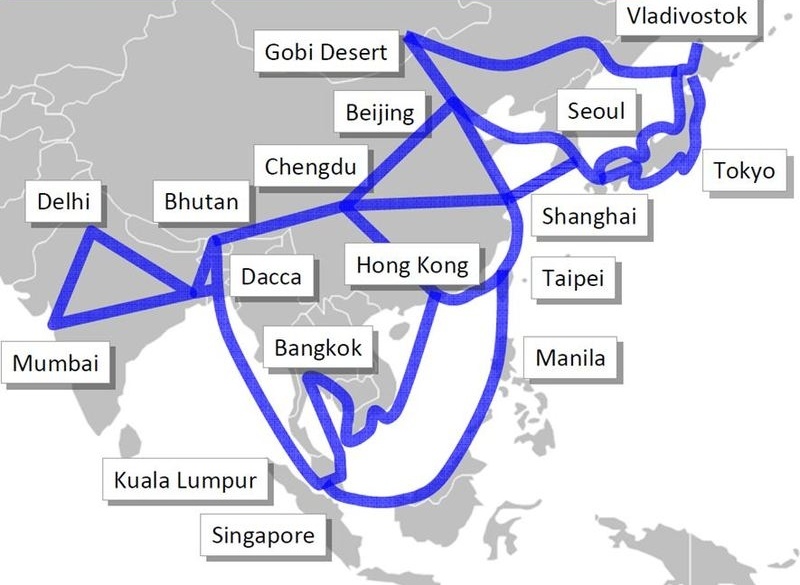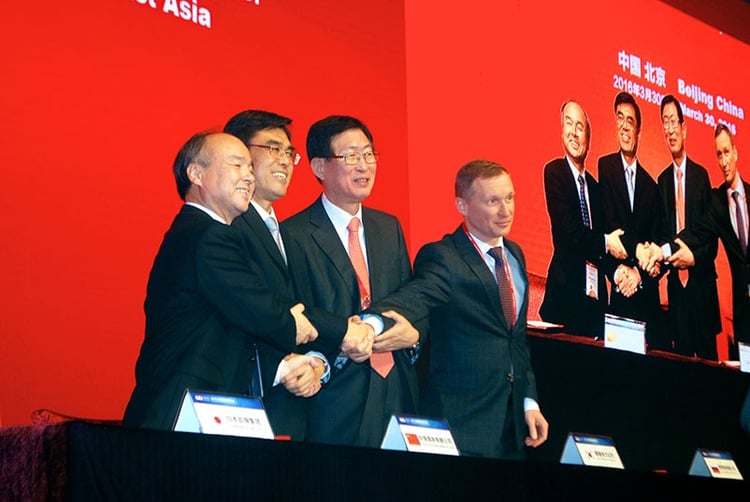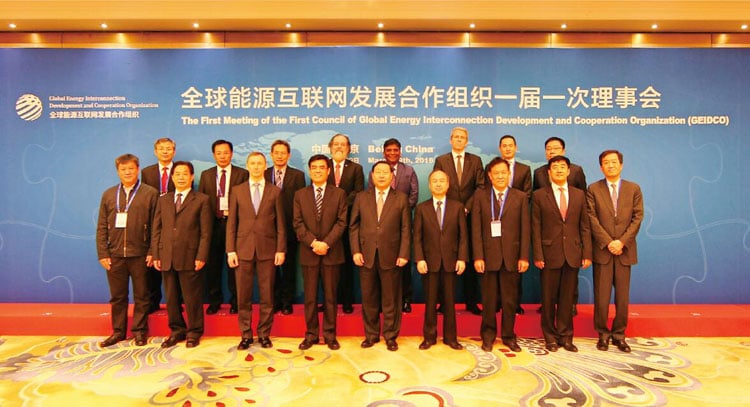
Entrepreneurs in China, Russia, South Korea, and Japan recently signed a Memorandum of Understanding towards developing the Asia Super Grid. It will interconnect areas around their countries, transmitting electrical power from solar panels.
This Super Grid is dependent on creating a voltage grid operating at more than 1,000 kilovolts (kV) AC and 800 kV DC over thousands of miles. Most voltage grids operate at 765 kV AC to 500 kV DC. The Rio Madeira transmission link in Brazil, the world’s current longest power transmission line (at 1,481 miles), operates at 765 kV AC and 600 kV DC.

The Rio Madeira link produces 7.1 gigawatts (GW) of power. The Asia Super Grid would have the capacity to produce over 10 GW.
The Asia Super Grid is Masayoshi Son’s brainchild. He’s the founder and head of the telecom and Internet giant SoftBank Group’s. Horrified by the disaster at the Fukushima Daiichi nuclear plant after the 2011 Tohoku earthquake, Son created the Renewable Energy Institute to help develop and promote renewable energy instead of relying on such perilous energy sources like nuclear energy.
Son believes that by tapping into the potential solar power energy available in China’s Gobi Desert, which could have the output of thousands of nuclear reactors, the supergrid could provide clean energy to the masses. It wasn’t long before he got the Korea Electric Power Company, the State Grid Corporation of China, and Russian power company PSJC Rosseti interested in his plans.

Once those major players signed on, Liu Zhenya, former chairman of China’s State Grid created, and now leads, the nonprofit Global Energy Interconnection Development and Cooperation Organization (GEIDCO). Since its development in March of 2015, members today include the four Asia Super Grid signatories, utilities, universities, and equipment manufacturers from 14 countries.
GEIDCO’s mission is to link the world’s electric grids to meet global power needs through renewable sources of energy. This goal comes in the aftermath of the Paris Climate Agreement, resource constraints, and climate change.

Interestingly, GEIDCO’s members are not worried about the feasibility of such an immense project; both Brazil and China have regionally interconnected grids, so transmitting electricity across large distances at high voltages has already been done.
No, what’s more worrisome is the political atmosphere preceding GEIDCO’s talks: after WWII’s brutal occupation by Japanese troops in Korea and China, there’s still unsettled claims over island lands. While these issues haven’t been brought up directly, there’s definite tension between some members.
Still, the group, with Zhenya at its lead, remain upbeat about the project. A globally-linked grid is the perfect transition to a sustainable way of life that will benefit everyone. The technology exists… All that remains is finding the will to make it happen.
Are you interested in going solar and decreasing your carbon footprint? Give us a call today at 407.331.9077 or contact us online. We would be more than happy to get you started.


